What to do if the toilet cistern is overfilled?
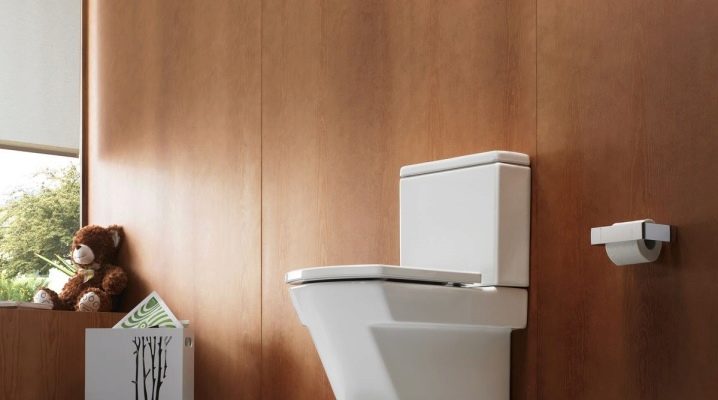
Many people are familiar with the situation when the toilet cistern continuously emits noisy sounds from the fact that it is constantly recruited and overflowed with water. If you do nothing about this, then the water does not stop at all, and the equipment quickly fails. The consequence of this may also be that the tank does not drain water well. There are several reasons for the occurrence of malfunctions and several options for solving this problem.
The main components and the mechanism of operation of the toilet cistern
Modern toilets may differ in the filling of the cistern, but the basic details and the principle of their operation are in most cases similar. The device of almost all tanks is not complete without the following components.
- Locking mechanism. This is a tap that automatically turns off the water supply when the tank is full. The float, which is constantly kept on the surface of the water, is responsible for the degree of fullness of the tank, which is a signal for the shut-off valve to operate.
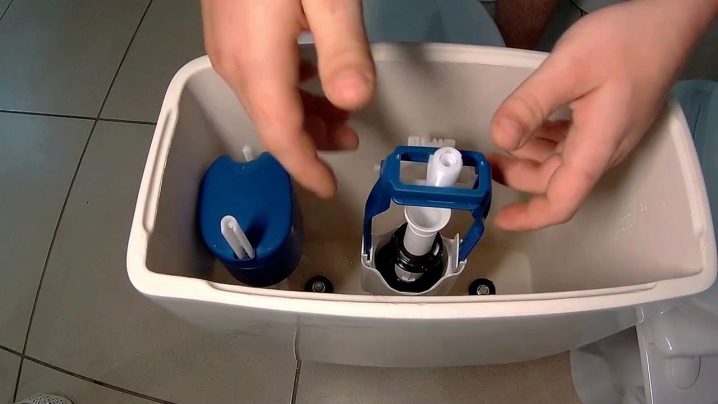
- Reset system. This mechanism is a valve that blocks the drain hole. The valve is operated using a button or lever. Modern models of cisterns are equipped with one or two flush buttons.
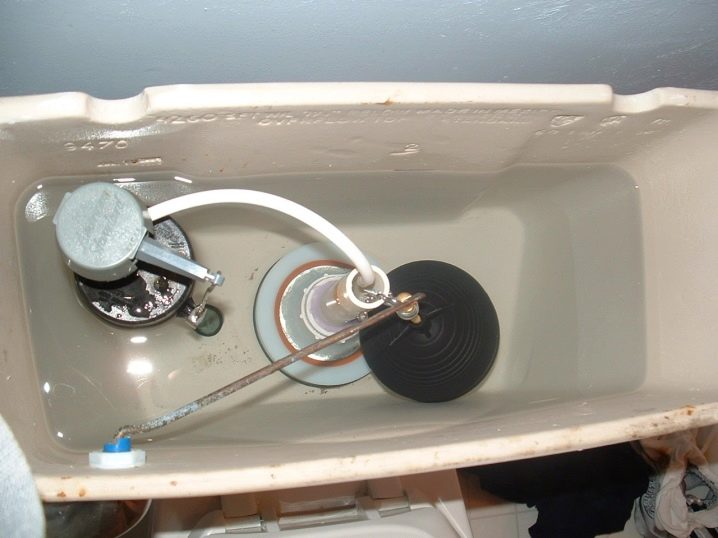
- Overflow system. In the event of an unexpected breakdown of the locking mechanism, it ensures that water is drained into the toilet.

Often, new models of the toilet bowl are mounted to the water supply with a lower connection. The main distinguishing feature of such a tank is the presence of a diaphragm valve. Under the influence of water pressure, it opens slightly and lets water inside.
With optimal water filling, the float exerts force on the piston rod, which gradually closes the central valve. When the correct water level is established, the valve is completely closed.
Reasons for overflowing the tank and methods of their elimination
Correct and timely identification of the cause of the overflow of the cistern will help to quickly and efficiently carry out repair work, eliminating the breakdown of the mechanism.
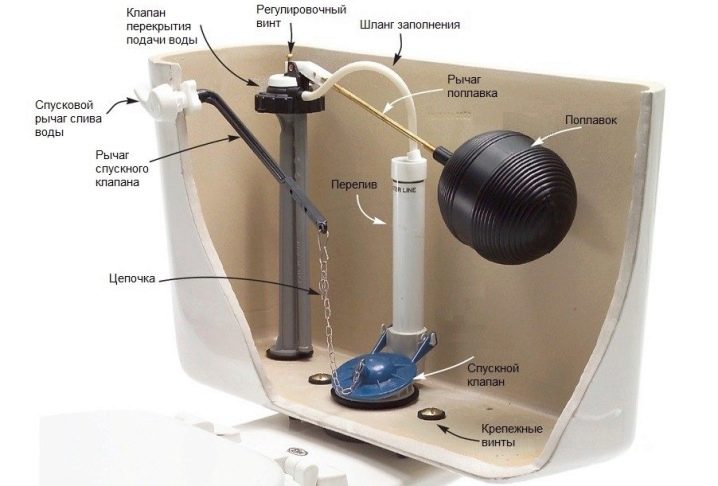
Incorrect setting
Very often, the reason that water is continuously poured from the tank into the toilet is the improper adjustment of the float of the locking mechanism or knocking down its setting during operation. As a result, the valve does not provide water shut-off before it enters the overflow system. In this case, the float must be lowered one step further with the shut-off valve completely closed. The correction of the malfunction depends on the model of the locking mechanism.
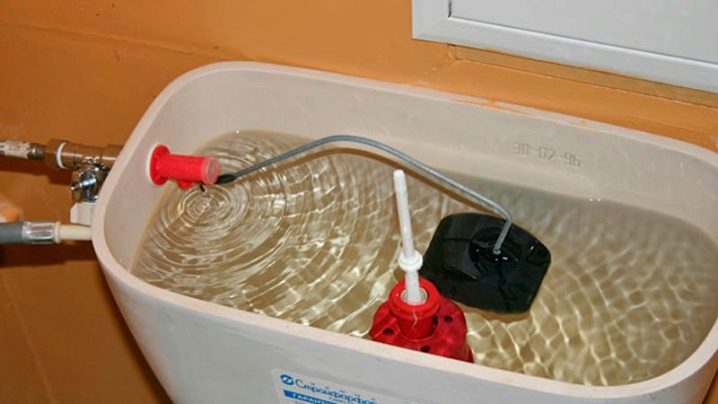
If an old-style tank is used, then the shut-off valve and float are connected by a metal lever. In order to change the water level, which is a signal for the valve to operate, it is necessary to manually bend the lever slightly.
In the event that the lever is plastic and is made of two parts connected by a bolt, you should slightly loosen the bolt, change the angle between the halves and tighten the bolt back.
In improved tanks, the position of the float in relation to the lever is changed by moving it. This will require some effort, perhaps even squeezing the spring locking mechanism.
In order to adjust the float, you will need to dismantle the cover. To do this, you need to pull out the ring that serves as a frame for the drain button. Older plastic tanks have clips on the sides.
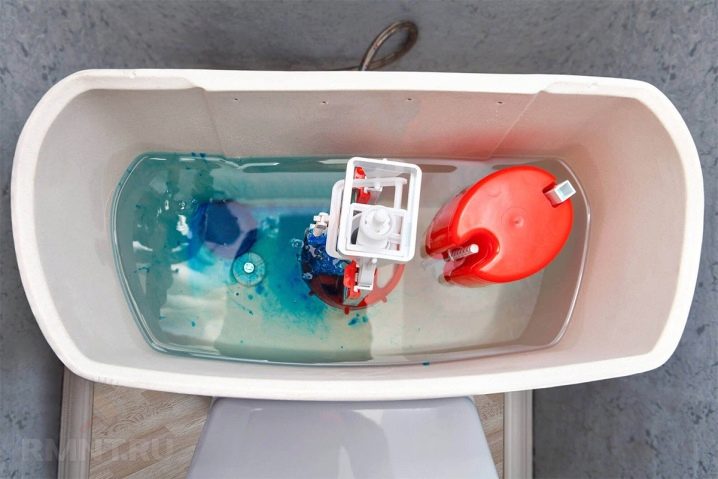
Depressurization of the float
After adjusting the float, make sure that it floats to the surface of the water, and the shutter mechanism works as expected. If during the check it turns out that the float is submerged or completely immersed in water, it cannot be adjusted, since it has been depressurized. In this case, you will need to replace this part.
As a rule, the float is replaced together with the shut-off valves.
The replacement process is carried out in the following order:
- water supply is cut off;
- the water from the tank goes down the toilet;
- the connection of the flexible liner is unscrewed;
- the nut fixing the shut-off valves is unscrewed;
- shut-off valves are removed;
- the installation of a working mechanism is carried out in the opposite way.
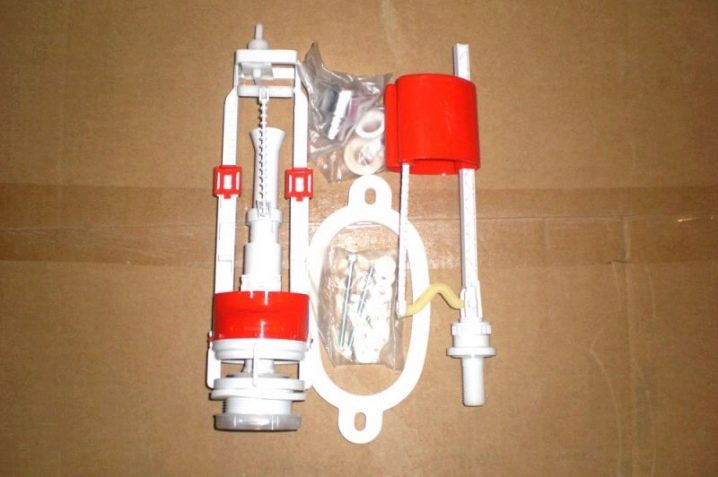
Locking mechanism malfunction
To make sure that the shut-off valve is working properly and shuts off the water, it is necessary to take some measures:
- drain the tank;
- raise the lever with your hands as much as possible;
- check the flow of water through the valve.
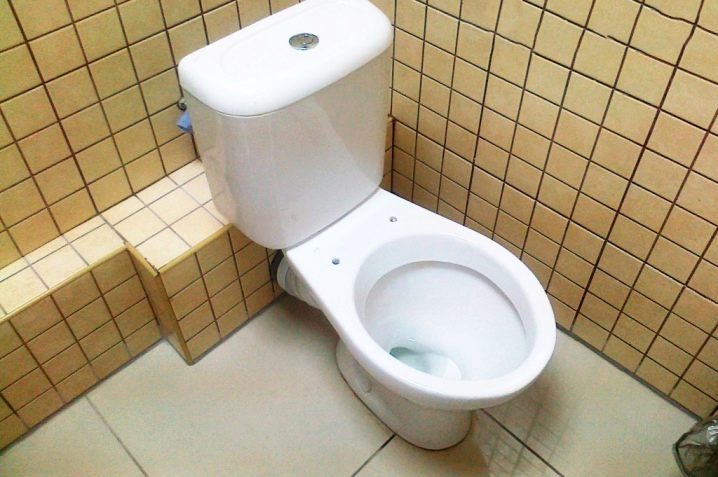
If, after lifting the lever, fluid continues to flow, then the shut-off valve is inoperative and should be replaced in the above installation order.
If water leaks regularly in the tank, it is usually necessary to replace the rubber gasket.used to seal the drain hole. The resulting rupture or weakening of the adjacent tightness can cause leakage. Occasionally, after prolonged use, the outlet valve may deform. In this case, the entire mechanism will need to be replaced.
Also, the reason for pouring water into the toilet can be the lowering of the emergency tube, which serves to get rid of excess fluid. That is, if the inlet valve and float system fails, a continuous flow of water will drain directly into the toilet, preventing the room from flooding.
For information on how to repair the drain tank, see the following video.













Thanks! All clear.
Thanks. Got it.
The comment was sent successfully.